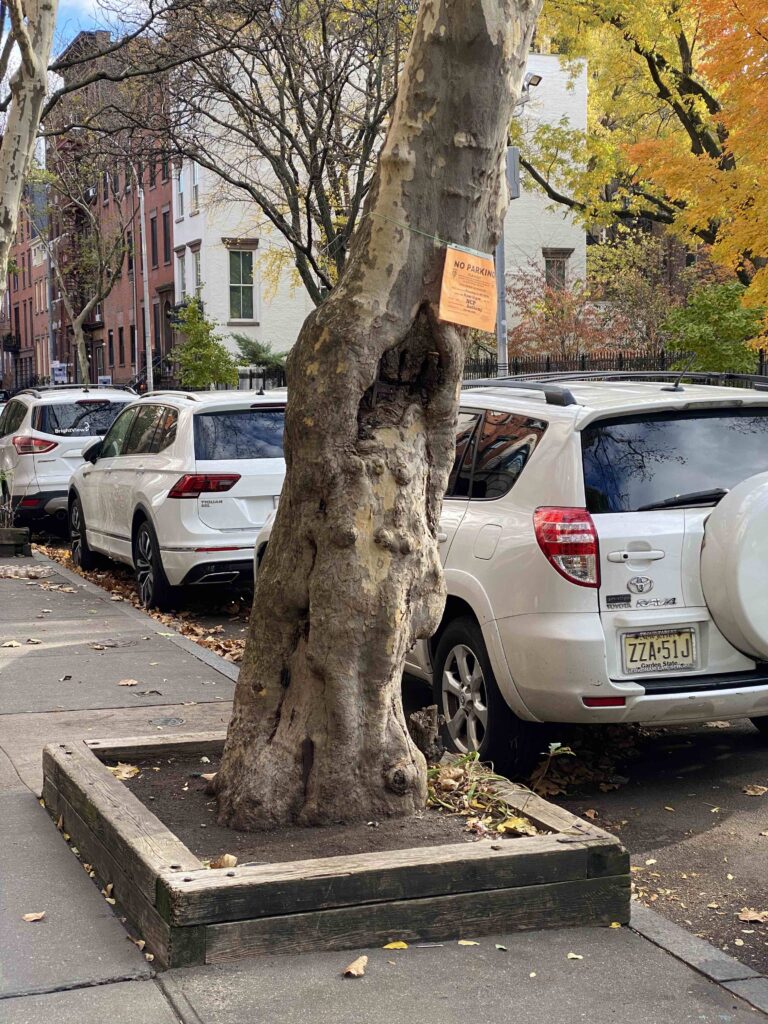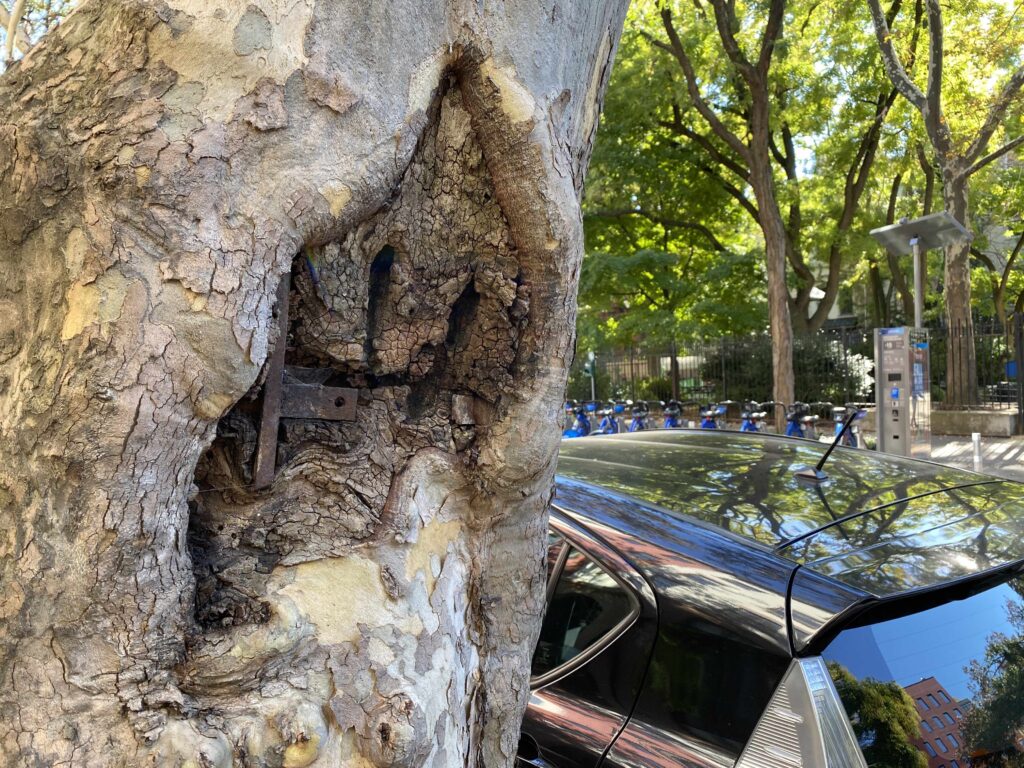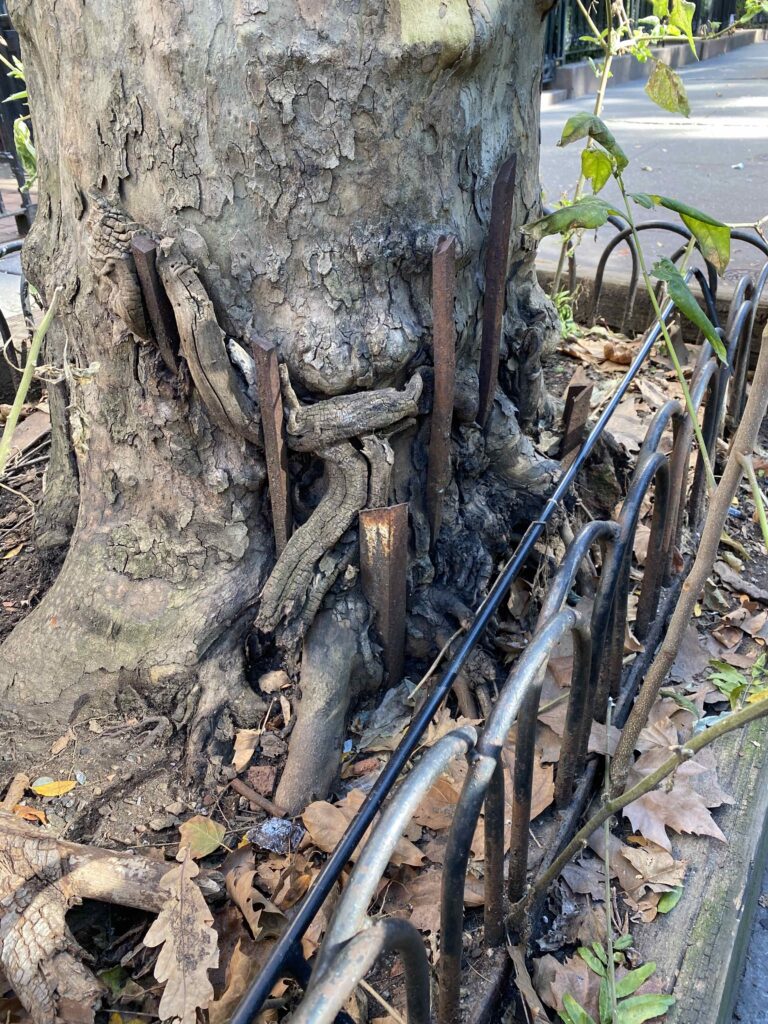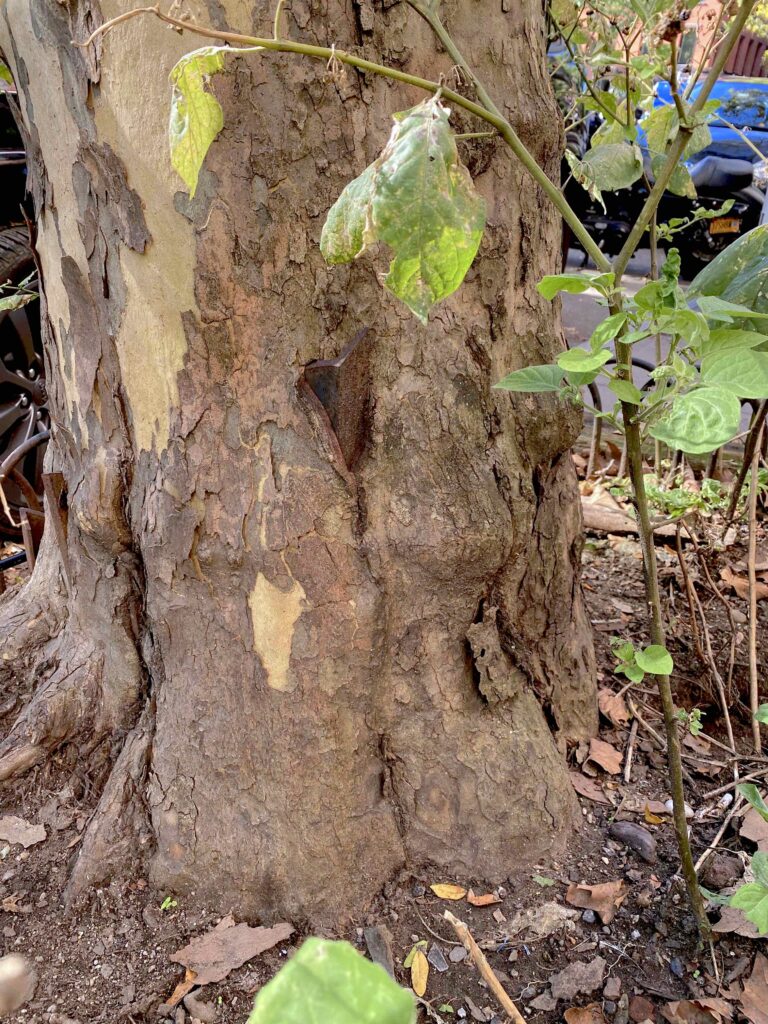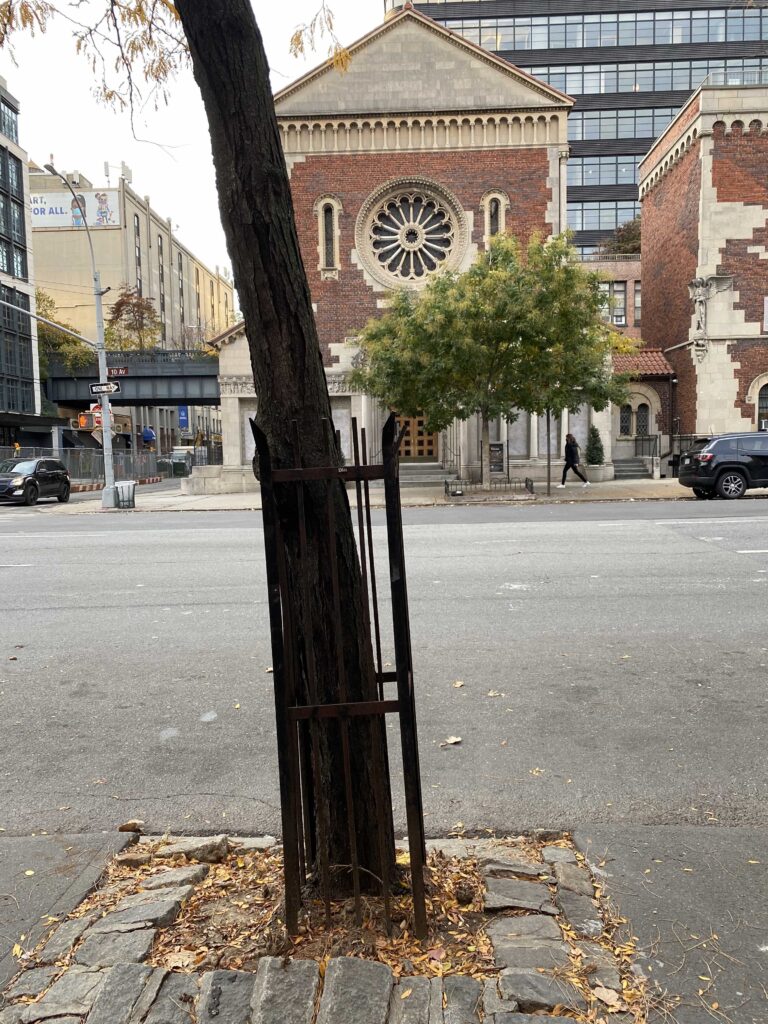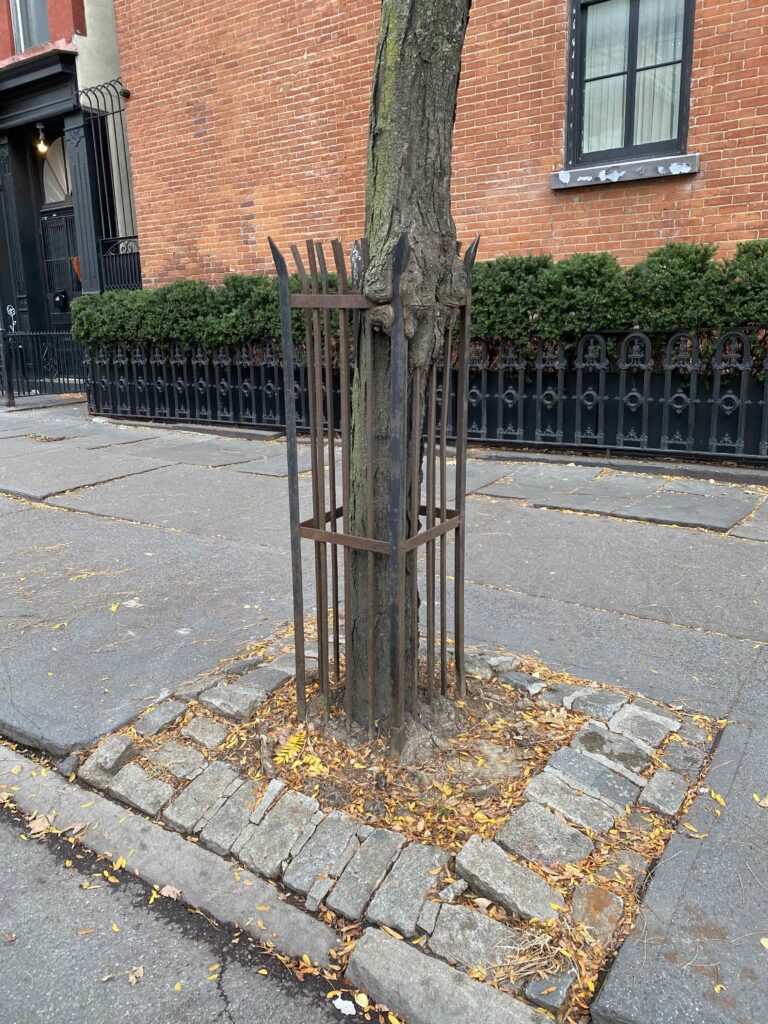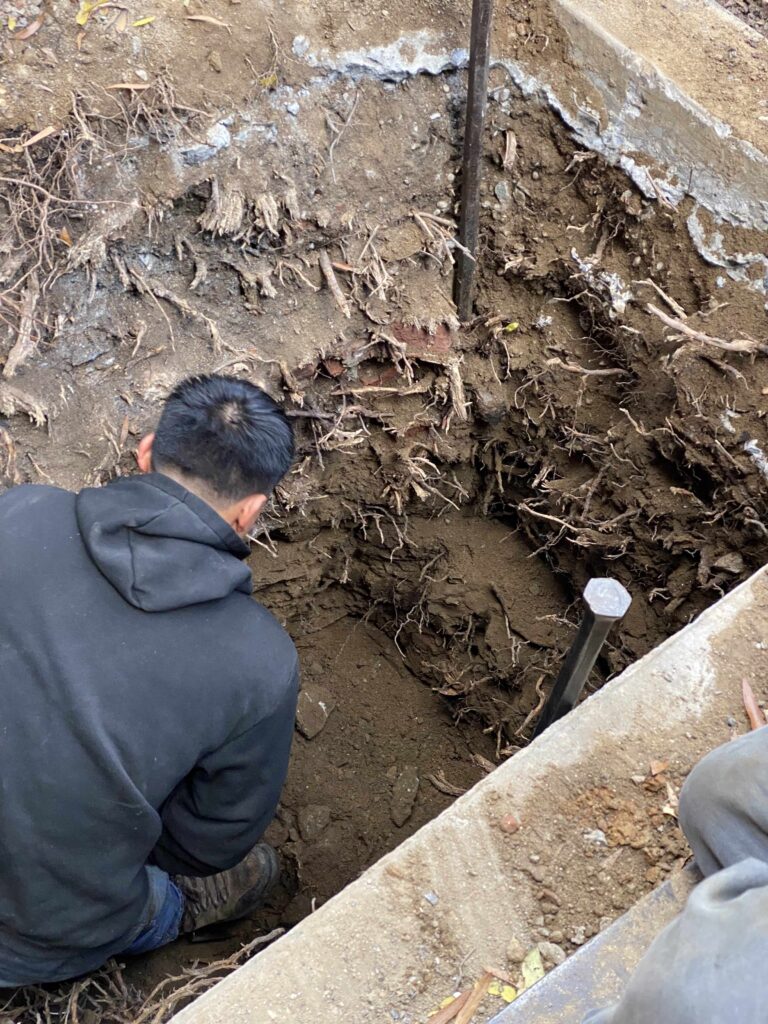There’s been a ton of talk lately about “New York Strong,” triumphant words from urban bipeds who are more than ready to move on from the latest crisis. Members of our species talk a lot about themselves — all day long on social media and TV, in op-ed articles and opinion pieces, books, magazine articles, or just the old-fashioned soap box on the nearest street corner. We always talk about how strong we are, how resilient, how innovative.
Walking around my neighborhood in West Chelsea I’ve been observing another form of resilience that’s much quieter, humbler, and so much more powerful. Take a look at this tree….
This London Plane (Platanus x acrifolia) stands near the corner of Tenth Avenue and 22nd Street. According to my neighbor and longtime caretaker of Clement Clarke Moore Park across the street, Allen Oster, it was planted sometime in the mid-to-late 1960s. Thanks to the fantastic New York City Street Tree Map, a project of the Parks department that identifies every street tree in town, it has its own ID number: 1425868.
The London Plane, an immigrant like so many of us, is the most common tree in New York City, making up about 12% of the Street Tree Map’s population. It has a story to tell about real strength and resilience, but you have to look closely to get the message….
When 1425868 was just a young shoot, the folks who planted it encircled the tree with an iron frame to protect it. The tree grew, but the iron didn’t budge. So this gorgeous piece of nature did what Nature has been doing since the beginning of time: it adapted. It grew around, and over, the iron frame. Eventually, it swallowed it whole. If you approach this tree and look closely, you’ll see real New York Strong: bits of rusty iron peeking through smooth bark.
Walk around it and you can almost hear 1425868 telling its story of resilience. Well, the cage was getting smaller and I was getting larger. Rather than capitulate, I grew around it, let it become a part of me. But I left windows here and there so the bipeds could see my past, and know my struggle, and learn from it.
Allen pointed me to a tree on the northeast corner of Tenth Avenue and 21st Street, which has what’s likely the same sort of “cage” that 1425868 had. According to the Street Tree Map this is a Thornless Honey locust (Gleditsia triacanthos var. inermis), number 1425114.
It too was determined to thrive so it devoured its jailor, in true New York style.
A bit farther uptown, on 87th Street, men were working near another Thornless Honey locust (no. 1444816), and permitted me to take a photo of what we normally can’t see: the deep mass of roots that thrive below street level.
All these trees have survived much more than their iron cages: Hurricane Sandy, and more recently Henri and Ida; countless dogs who lift a leg while passing by; pests and fungus; salt from the snow plow; the indignities of concrete and asphalt; construction sheds; cigarette butts, etc. They just keep growing in their own way, slowly, quietly, relentlessly, reliably. They don’t write op-eds and post on social media about how awesome and resilient they are. They don’t care if you notice them, but if you do, they’ll gladly share a bit of their story.

